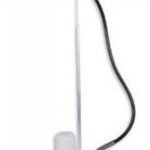Nothing replicates the airy, ballerina-like look and feel of a full, multi-layered tulle skirt. Tulle is delicate, but its fragile nature is what makes it so appealing. Although pure silk tulle is available, it is costly and extremely fragile, and doesn’t have the loft of the more commonly used polyester version.
Tulle snags easily and so requires careful handling, especially near chair legs, sharp edges, scissor points, or the zipper of a garment bag. It makes a lovely full skirt when used in six to eight layers over a taffeta underskirt (for a loftier look, insert one or more layers of stiff net; for a shaded look, alternate white and cream or insert a layer of another color, such as pink or peach). Tulle comes in widths up to 108 inches, which is the perfect width for skirts. It looks best in skirts that are ankle length or have a short sweep train. Long tulle trains are bulky and often unattractive when bustled. Tulle makes perfect base for sequins, which can be glued to the topmost layer of tulle or to the second layer for a more subtle effect.
Tulle’s filmy nature makes it somewhat tricky to handle. In fact, working with it is almost like cutting, stitching, and pressing a cloud. The following are some helpful hints for handling this light fabric.
Cutting
Purchase a wide piece of tulle and you may be able to eliminate the center back seam by cutting the skirt in a circle. Before cutting, be sure to calculate the skirt length carefully so that you can reduce the tedious work of trimming the layers later to make straight and uniform hems. Tulle is such a thin fabric that you can cut multiple layers at once. For best results, hold them in place with weights rather than pins, and use sharp scissors. Then, baste all layers together along the top edge of the skirt before moving the tulle from the cutting surface.
Stitching
Tulle is easy to stitch, but go slowly when machine stitching. Since the fabric is mostly air, threads can tangle easily and break, and camouflage a new thread is difficult. TO minimize tearing above a back opening, stabilize seam allowances with a row of stitching along the seamline on either side.
Pressing
For best results, press tulle with the highest temperature it will tolerate (experiment on scrap pieces of fabric), and be aware that polyester tulle melts easily. Tulle is tedious to press if it’s badly wrinkled, so press out prominent wrinkles before cutting and try to avoid wrinkling the fabric while working on it. Seam allowances can be pressed open.
Hemming
For a lightweight, float look, leave hem edges untreated or apply a narrow ribbon. Sew the ribbon slowly along the top and bottom edges, stitching in the same direction both times. Be sure the ribbon is long enough to circle each layer of the skirt without piecing which will spoil the effect.


